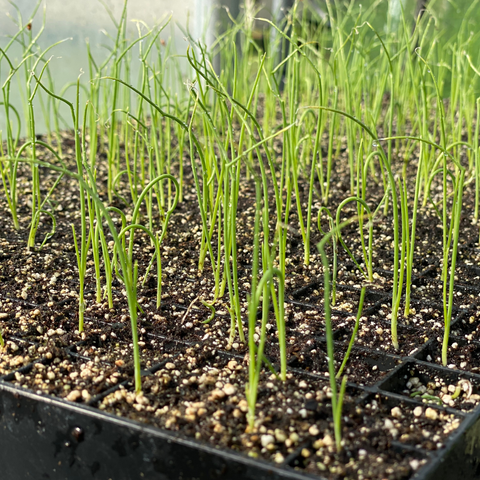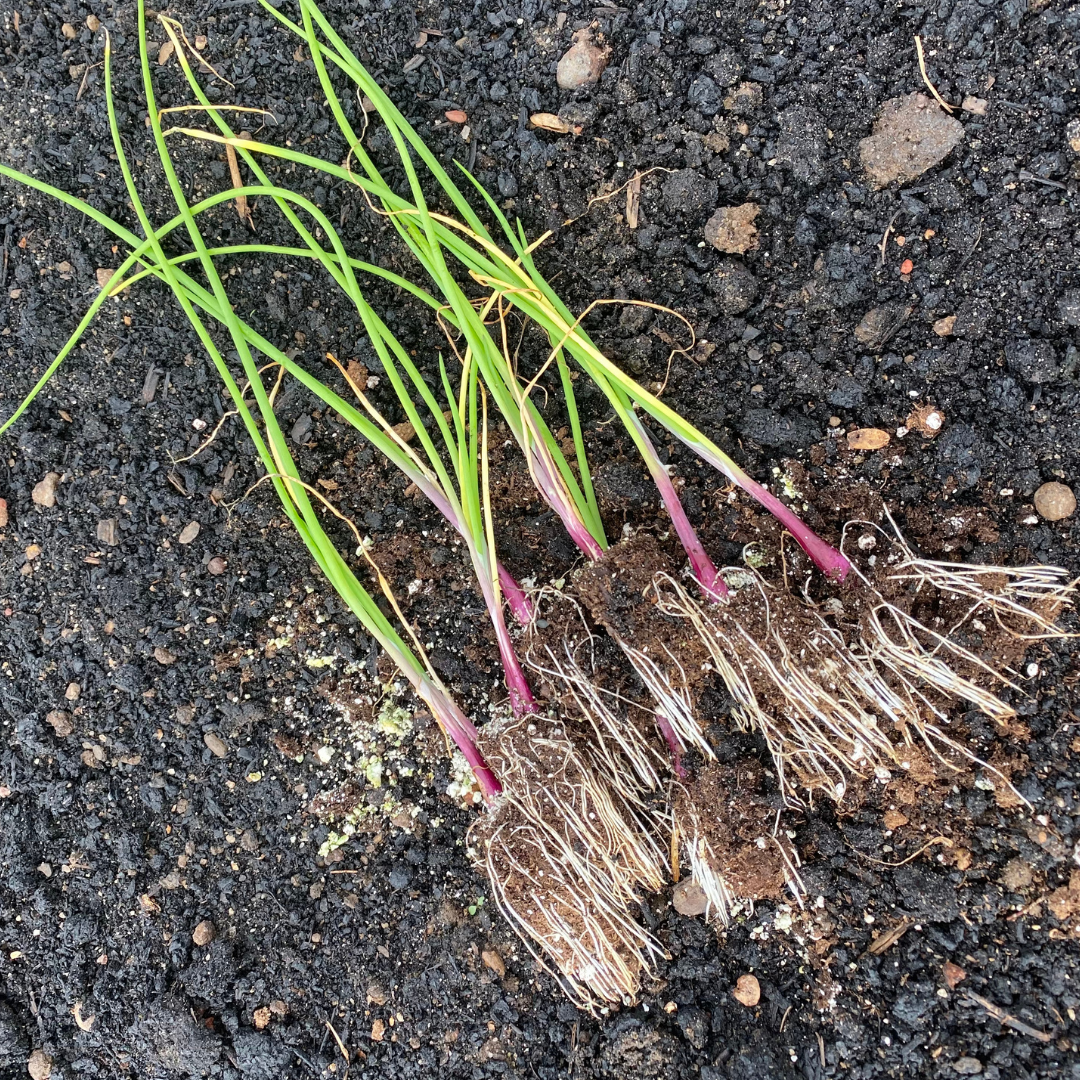Onions are one of our favorite storage vegetables to grow in the backyard grocery store. They usually store for several months after harvesting and we find ourselves using them in almost every meal we make. We like growing a wide variety of onions including red onions, flattened (granex) sweet onions, round sweet onions, and even white onions on occasion.
Here in zone 8b, we "overwinter" our onions. This means we plant them in the fall (usually November), grow them throughout the winter months, and harvest them in early spring. Onion plants can usually tolerate temperatures down to 20 degrees as long as those temperatures are not sustained. We rarely get that cold here. And if we do get that cold, it doesn't stay that cold for more than a few hours.
Several years ago we tried growing our onion plants. In the past we had always purchased plants at the local feed and seed store or bought plants from an online vendor. But we wanted to see if there would be any considerable differences in plant growth and eventual harvest between plants we grew and plants we purchased.
We also wanted to try specific short-day onion varieties that weren't available to purchase as plants. When you're buying plants, you're often at the mercy of the plant grower based on what varieties they have available. When you grow your own transplants, you have many more options as far as varieties go.
When we decided to try growing our own onion plants, we did a trial and compared the growth between plants we grew and plants we purchased from an online vendor. And while the onion plants we purchased online had consistently produced a great onion harvest for us, we did see some noticeable differences between growing our own plants and buying plants.
IS THERE A DIFFERENCE?
The primary difference between growing your own onion plants and buying plants is the transplant shock when you're planting them in the ground. Often times, onion plants that are purchased locally or online have been removed from the ground for at least a couple weeks. And while they do survive just fine like that, it does create a bit of a delay for them to start growing again when they are planted.
We found that the onion plants we grew in seed starting trays started growing much faster than the onion plants we had purchased. We also found that our eventual spring harvests were a bit earlier on the onion plants that we grew ourselves. The differences weren't night and day, but there were some significant differences in plant growth.
IS IT WORTH IT?
As a result, we recommend growing your own plants when you can. If you already have a seed starting setup for growing transplants of tomatoes, peppers, cabbage, broccoli, etc., it's very easy to add onions to the mix. You'll also be able to try new varieties you weren't able to try in the past.
If you don't have a seed starting setup, you might not want to purchase a bunch of seed starting equipment for the sole purpose of growing onion transplants. The plants you purchase locally or online will do just fine as mentioned above, but growing your own plants does have it's advantages. And growing your own plants is just more fun!
Onions transplants are relatively easy to grow compared to other vegetables, but they do take a bit longer to germinate. Ideally, they'll take around 6-7 days to germinate. But I've seen them germinate as soon as 4-5 days. After seeding them in seed starting trays, be sure to keep the soil sufficiently moist for at least a week to ensure adequate germination.

Unlike other vegetables we grow from transplants, thinning is not necessary with onions. You can make the most of your seed starting space by planting multiple seeds per cell, and thinning them prior to planting. Because onion roots tend to grow straight, teasing apart the individual onion plants at transplanting is really easy.
Onions usually take around 5-6 weeks to grow from seed to viable transplants, so make sure you give yourself plenty of time so that your in-ground planting dates are proper for your area. Once the leaves are emerged from the soil and upright, we'll start fertilizing the seedlings twice a week to ensure they grow healthy roots prior to transplanting.
We've tried quite a few short-day onion varieties over the years, but are always excited to try new varieties and compare them to the ones we've grown in the past. Below is a list of the short-day onion varieties we're growing this year:

